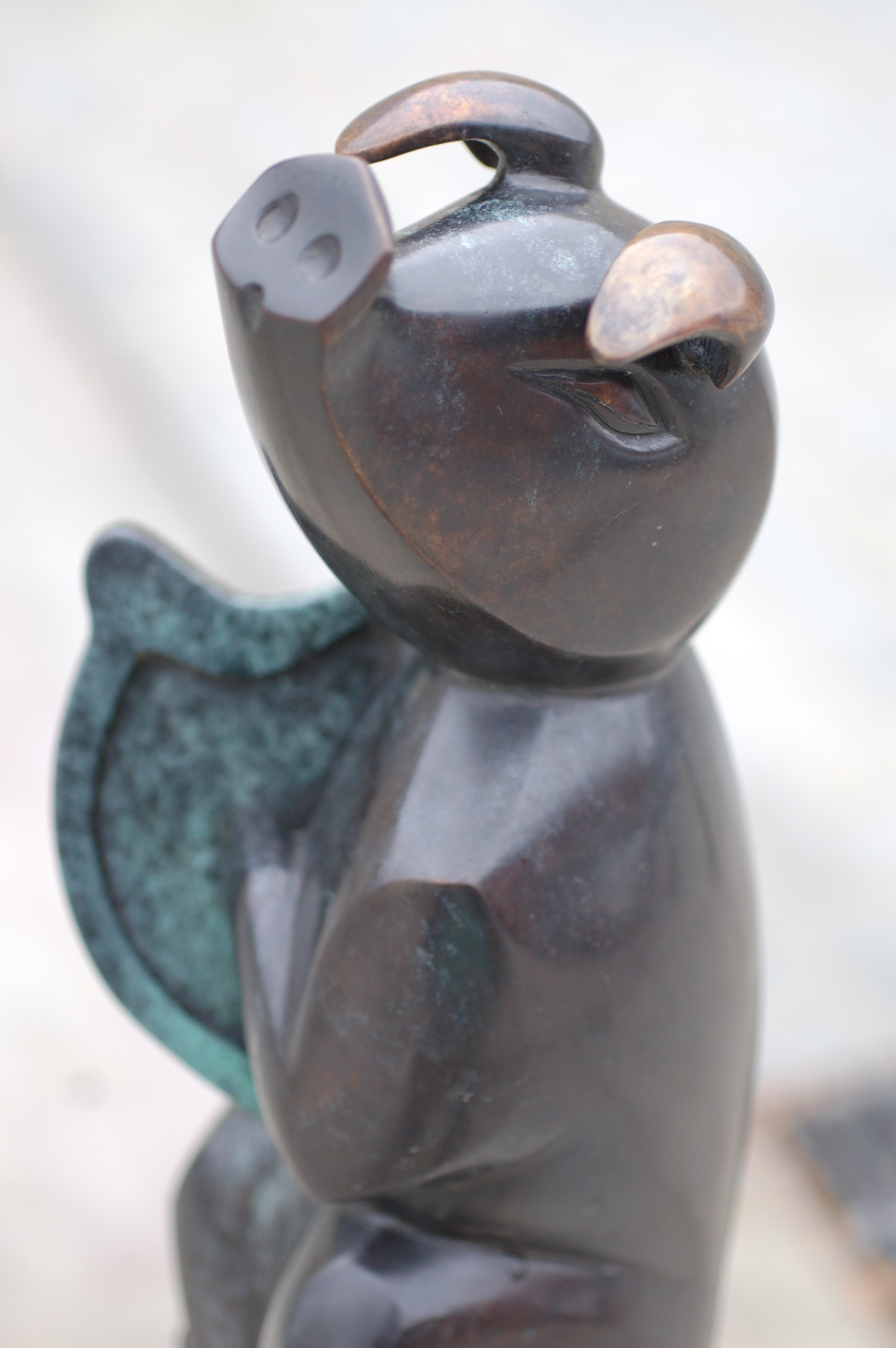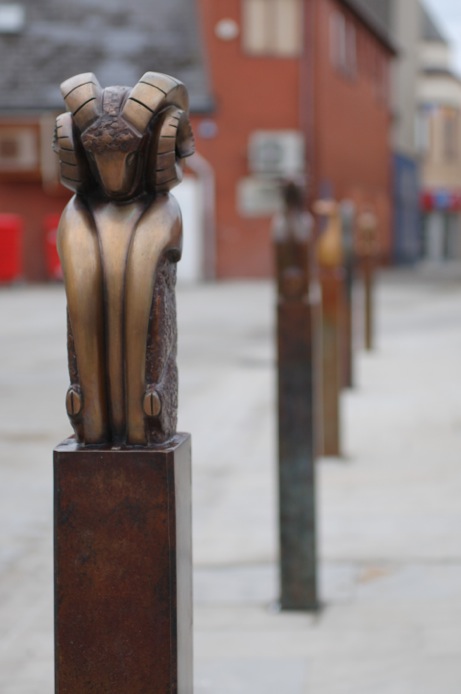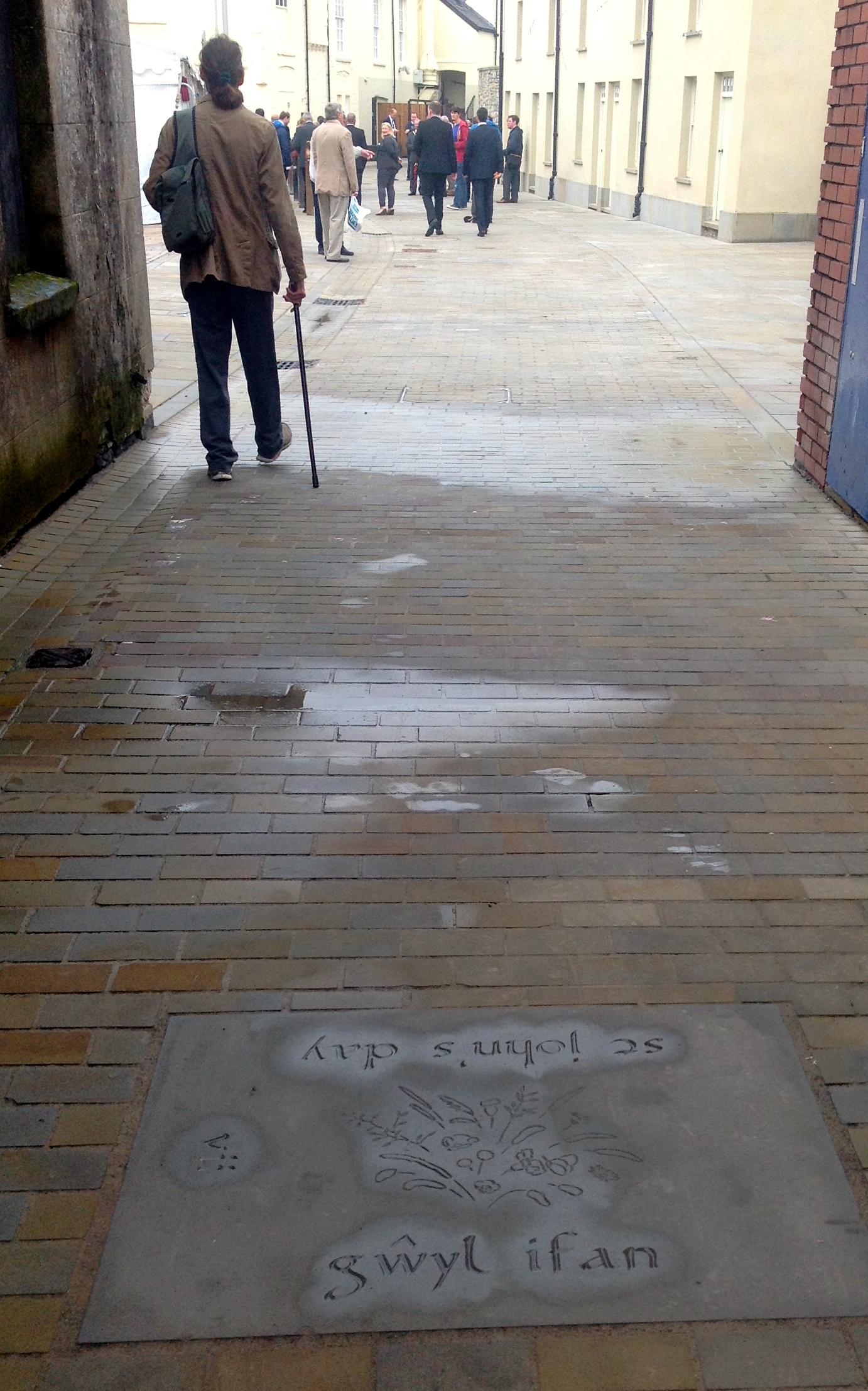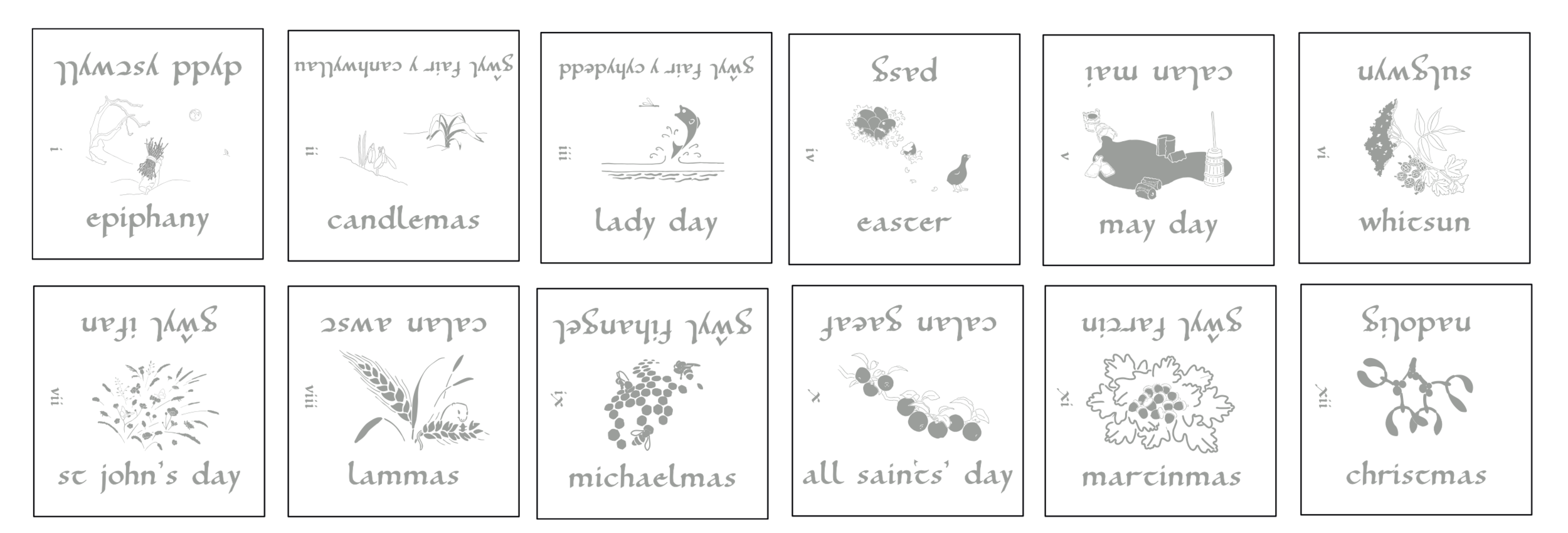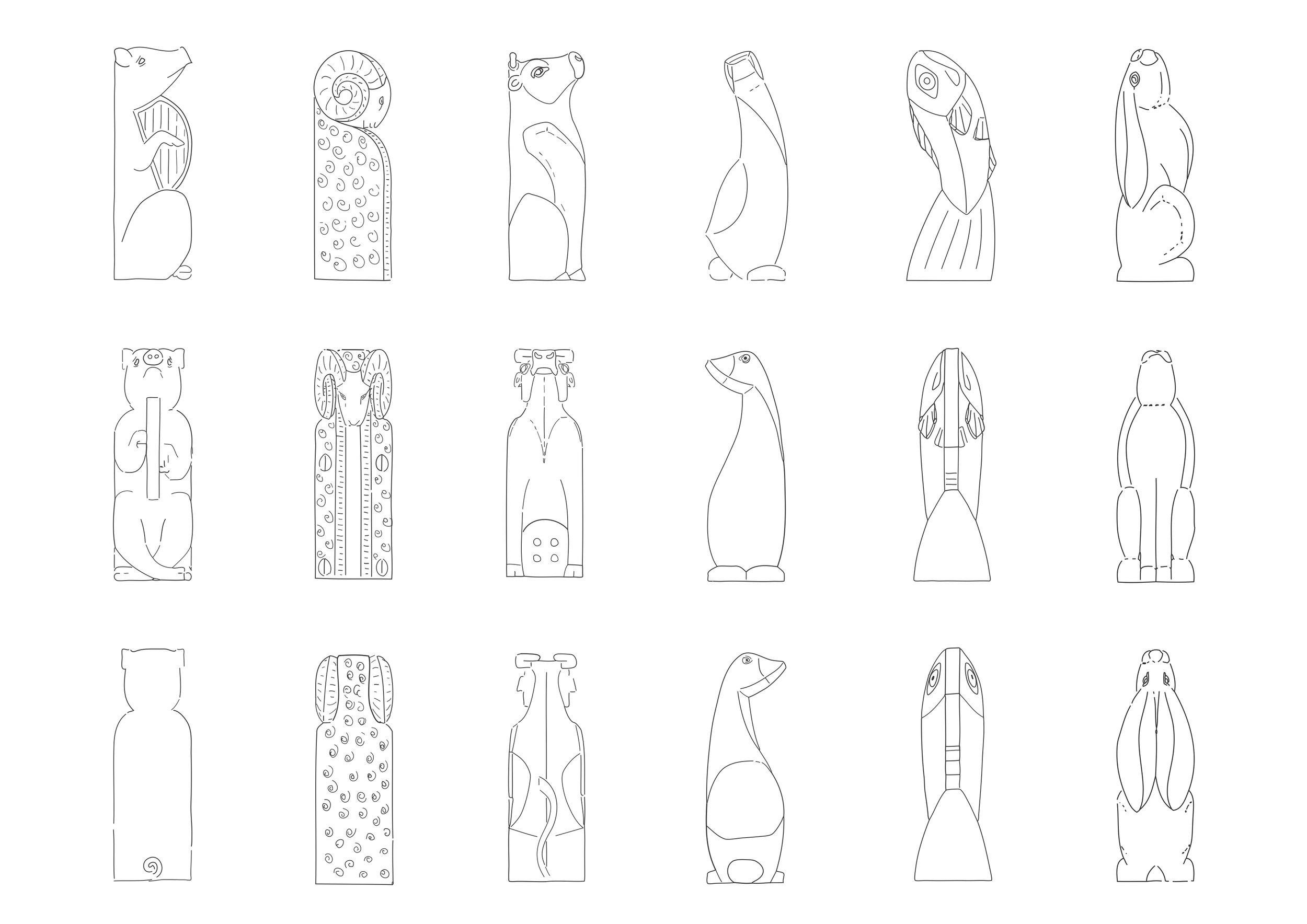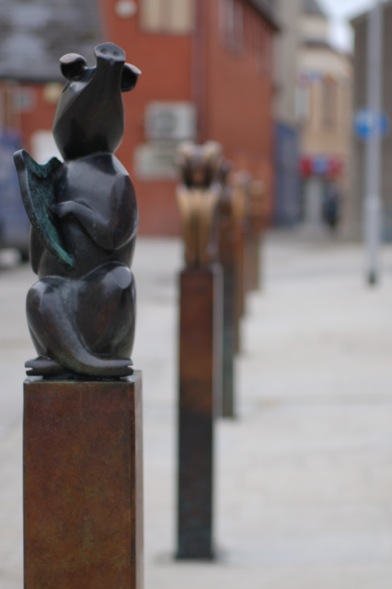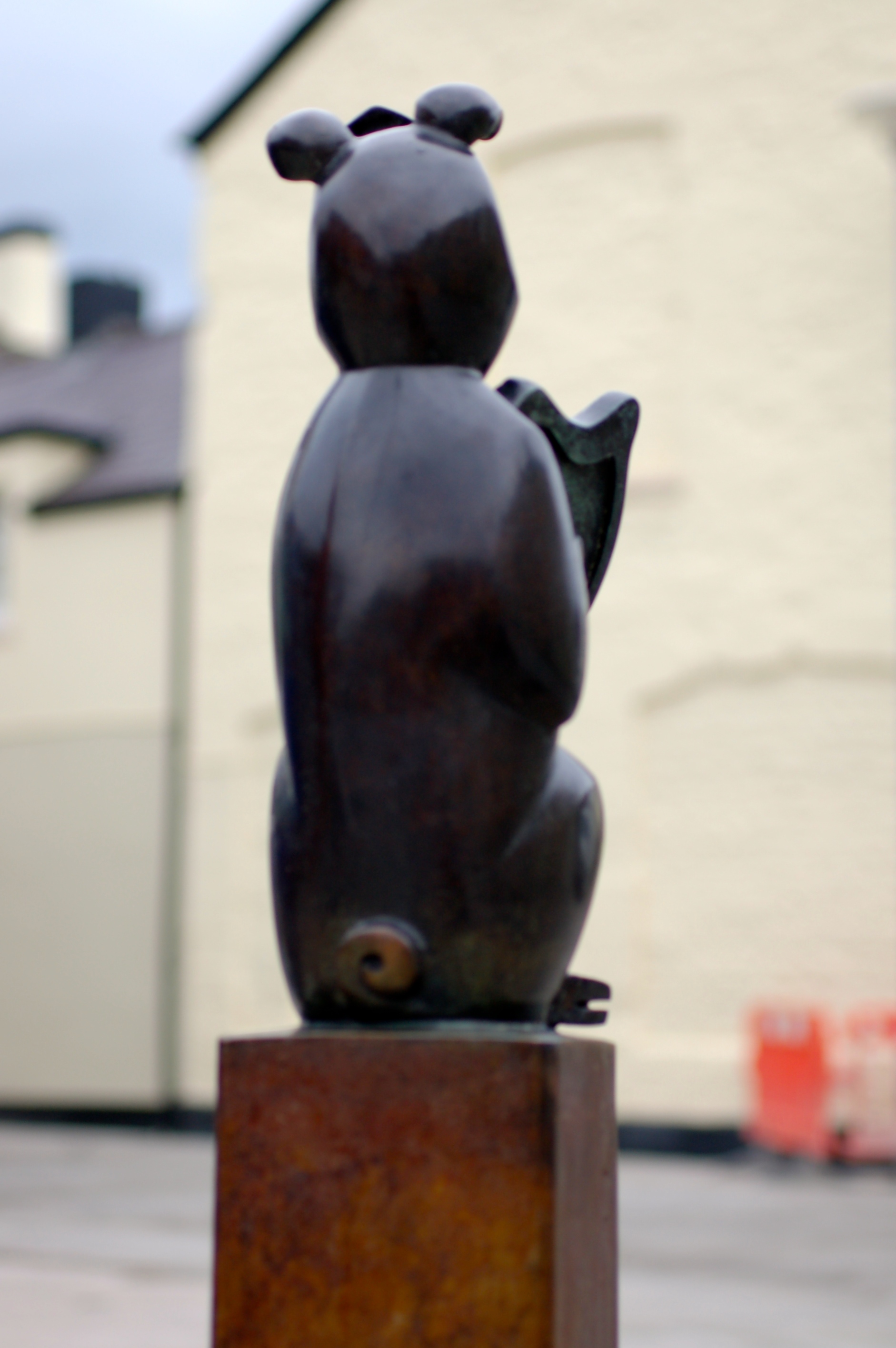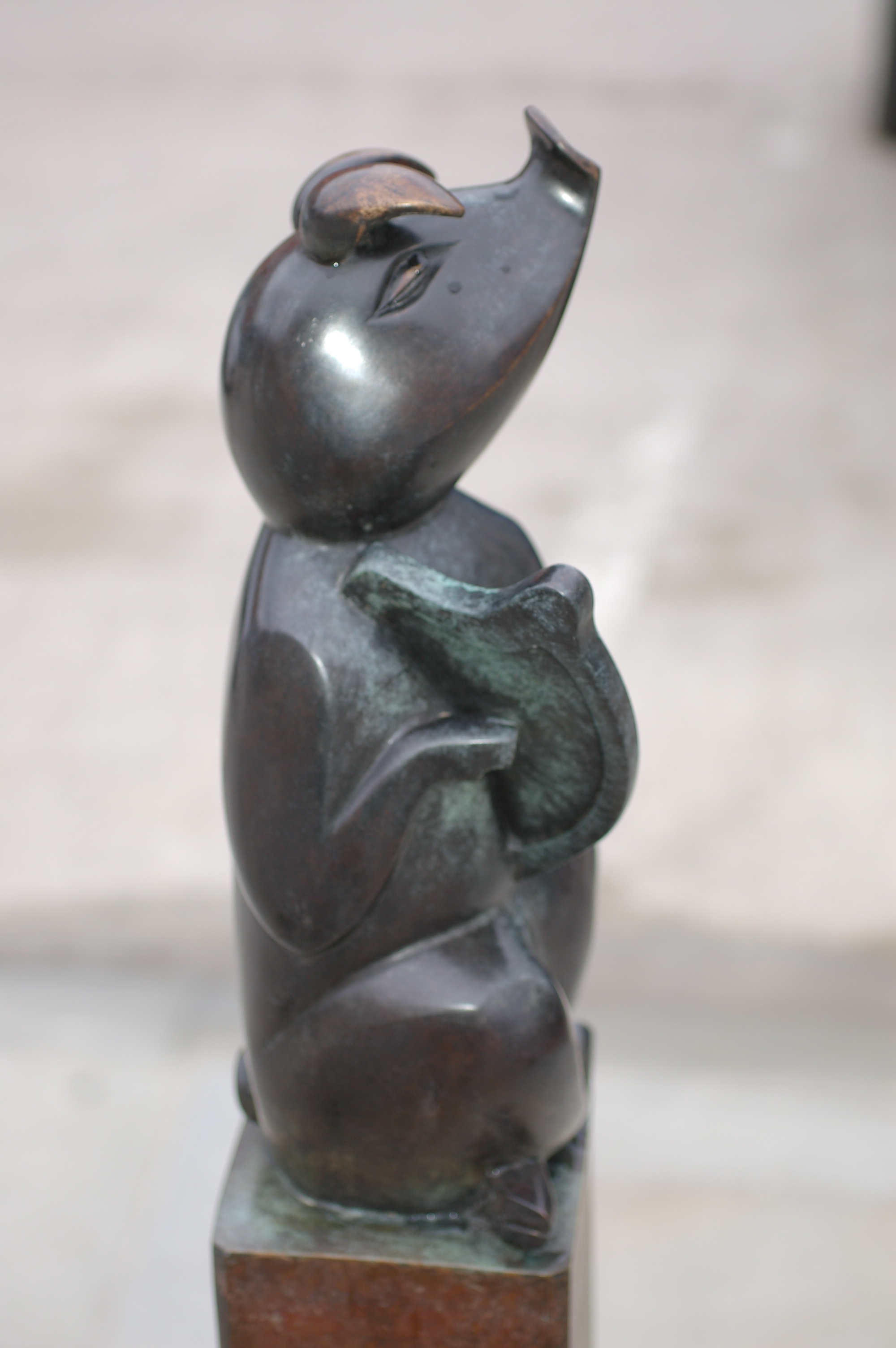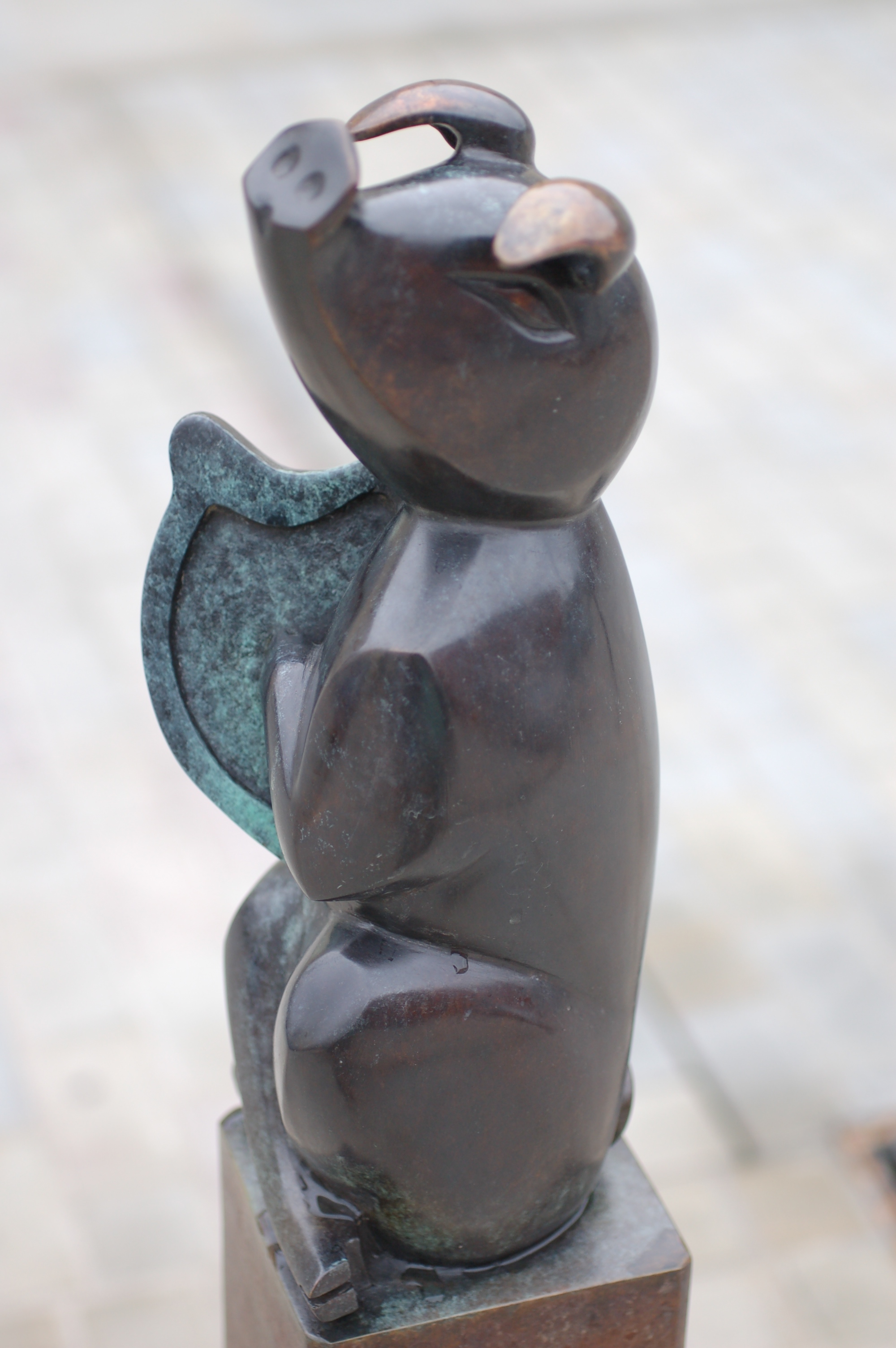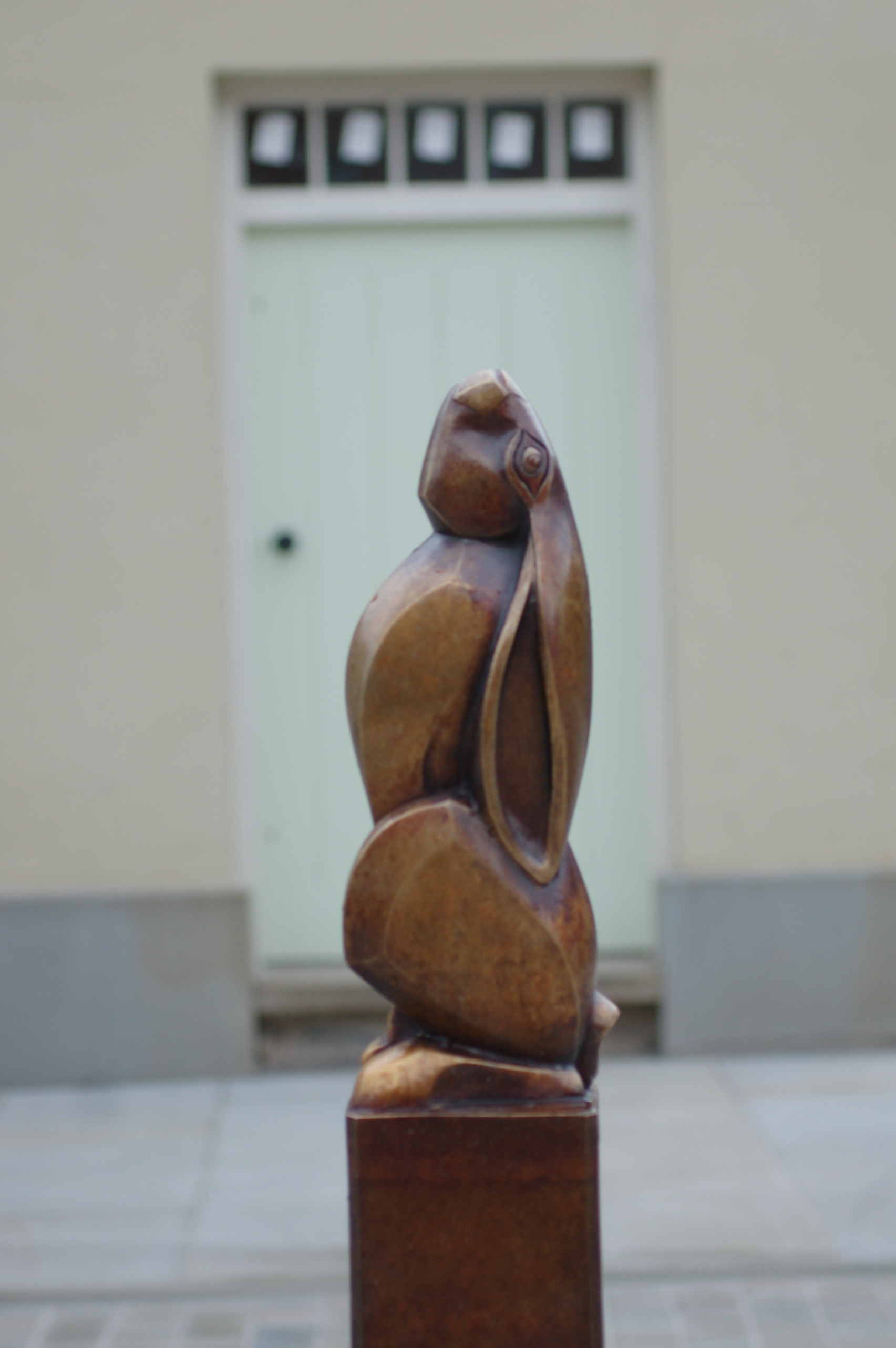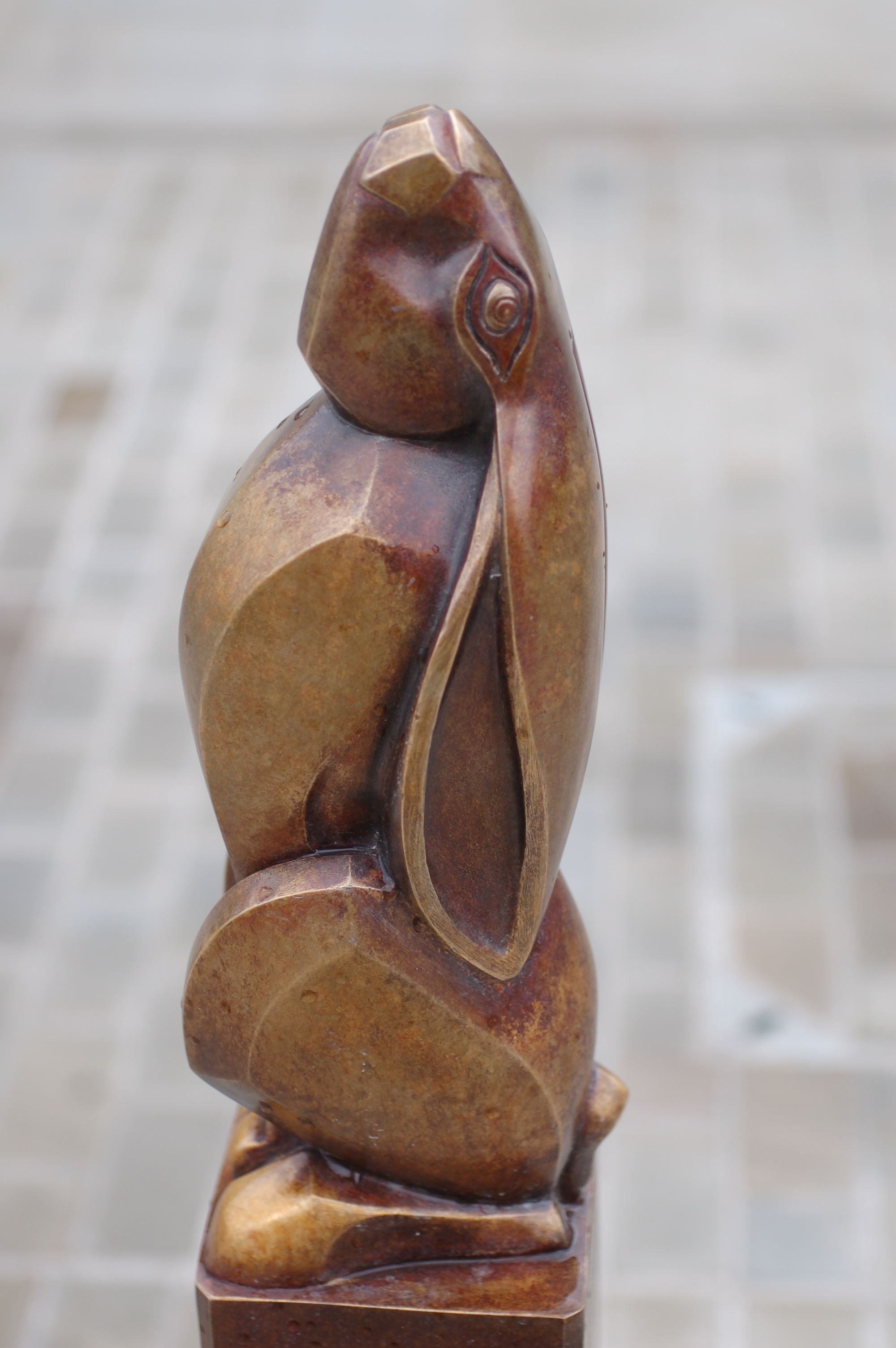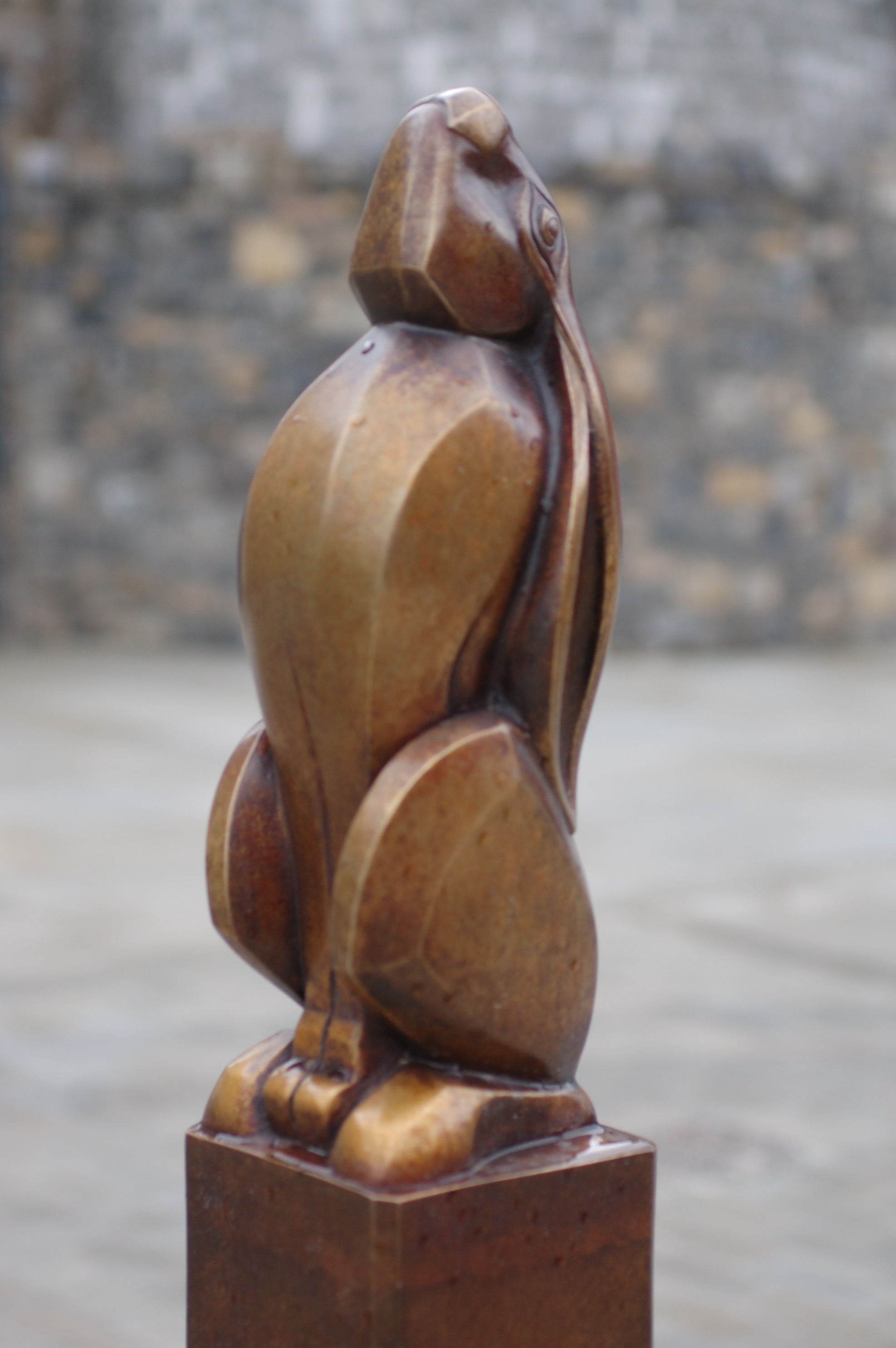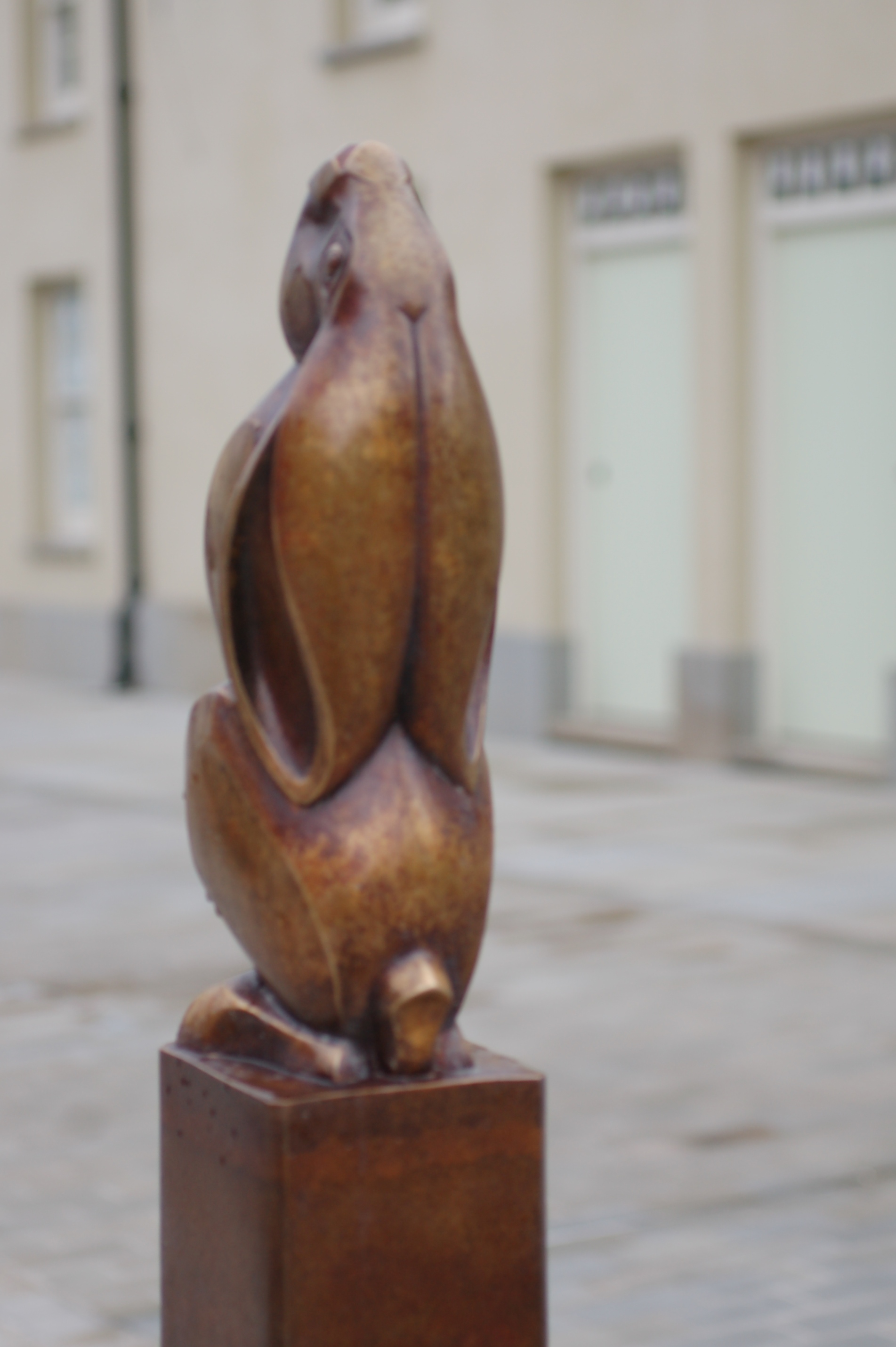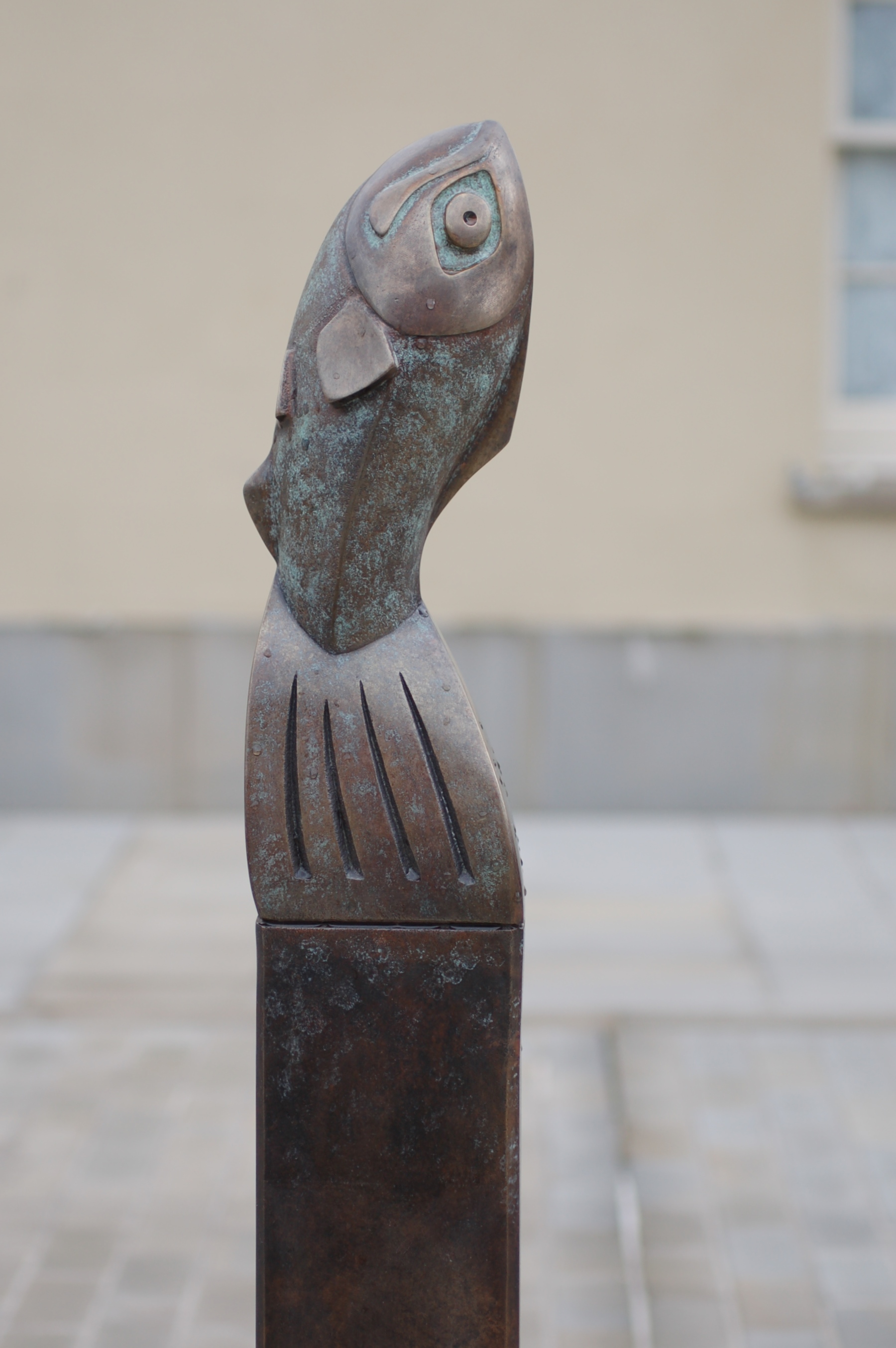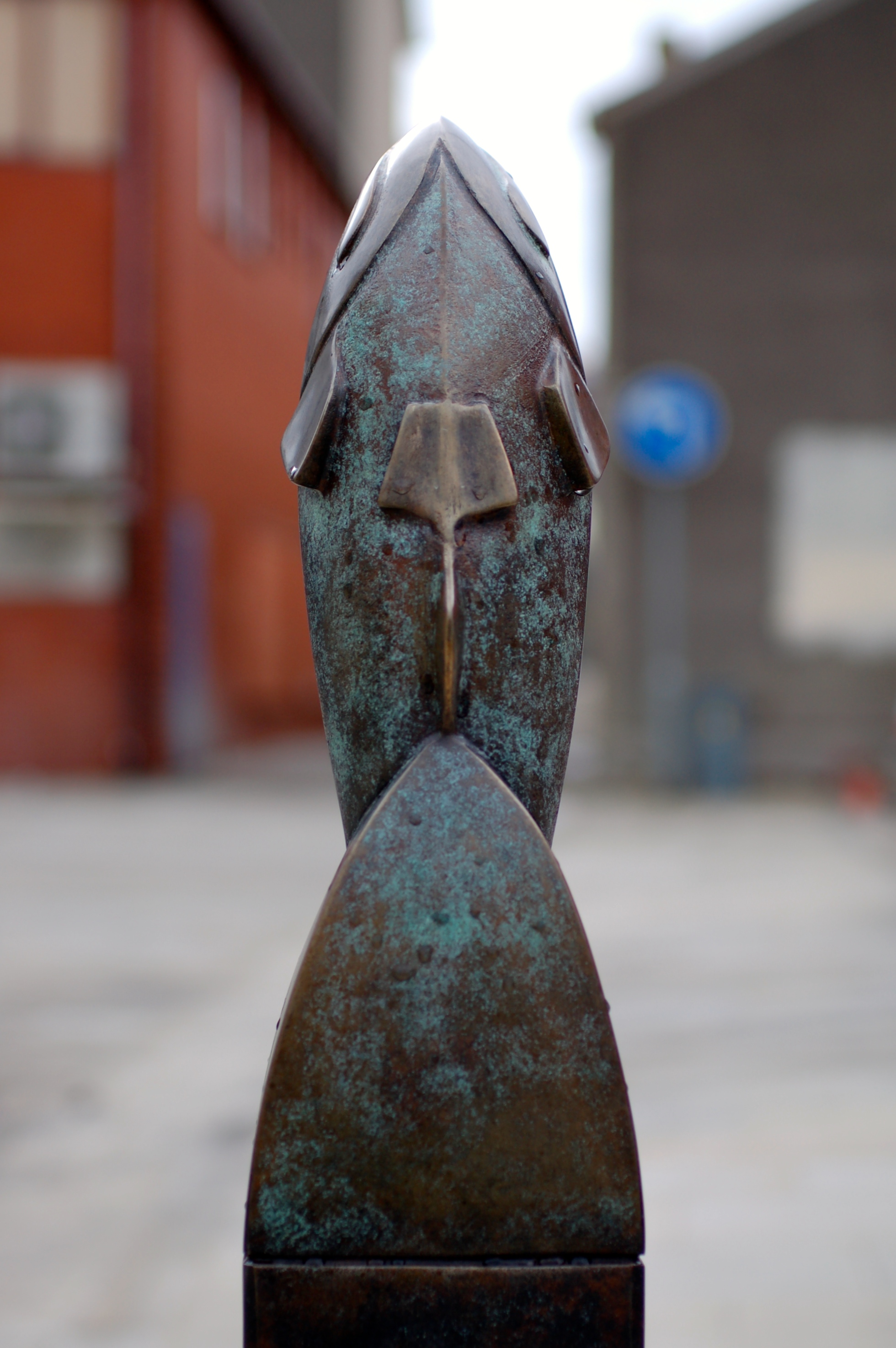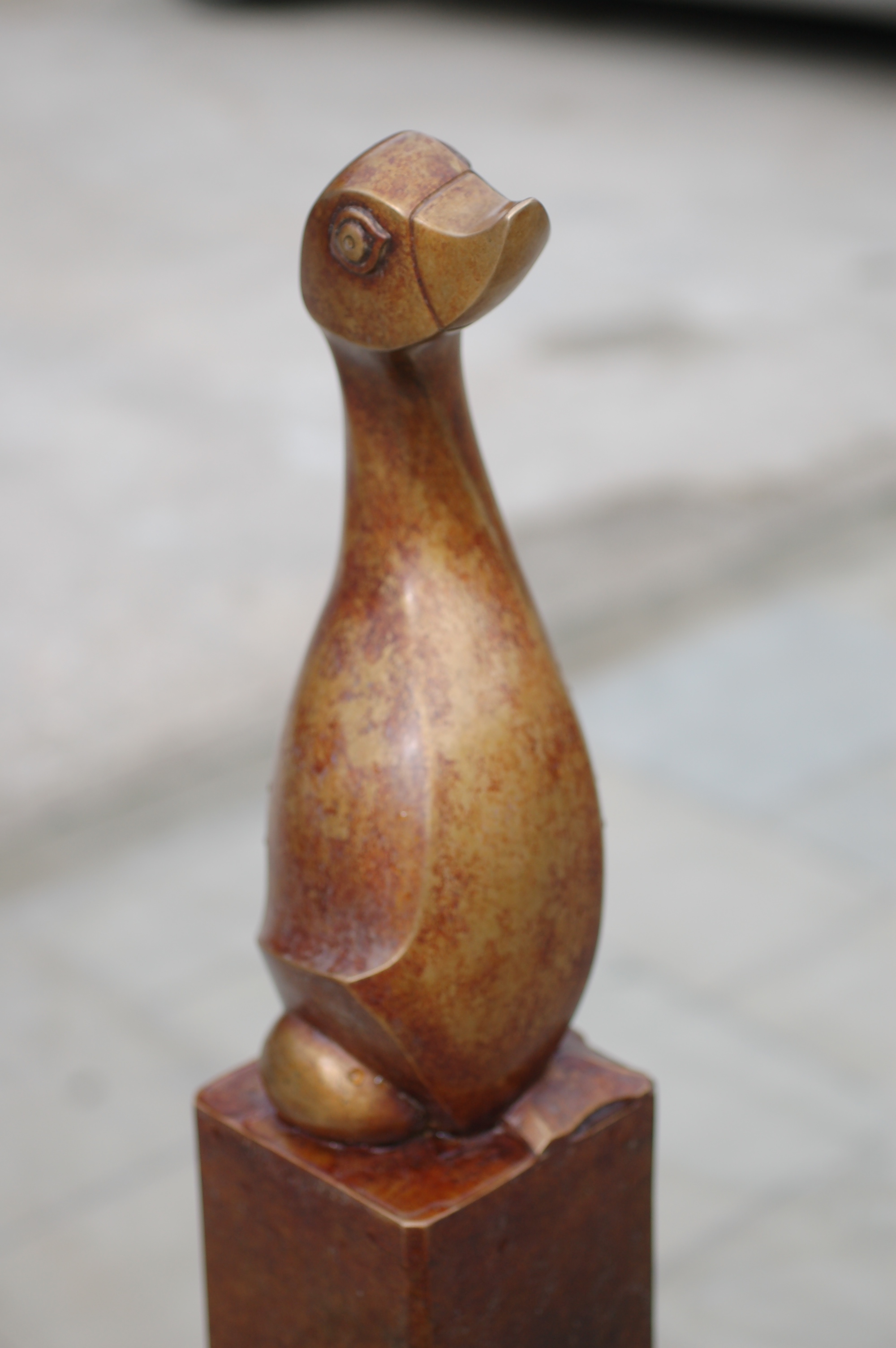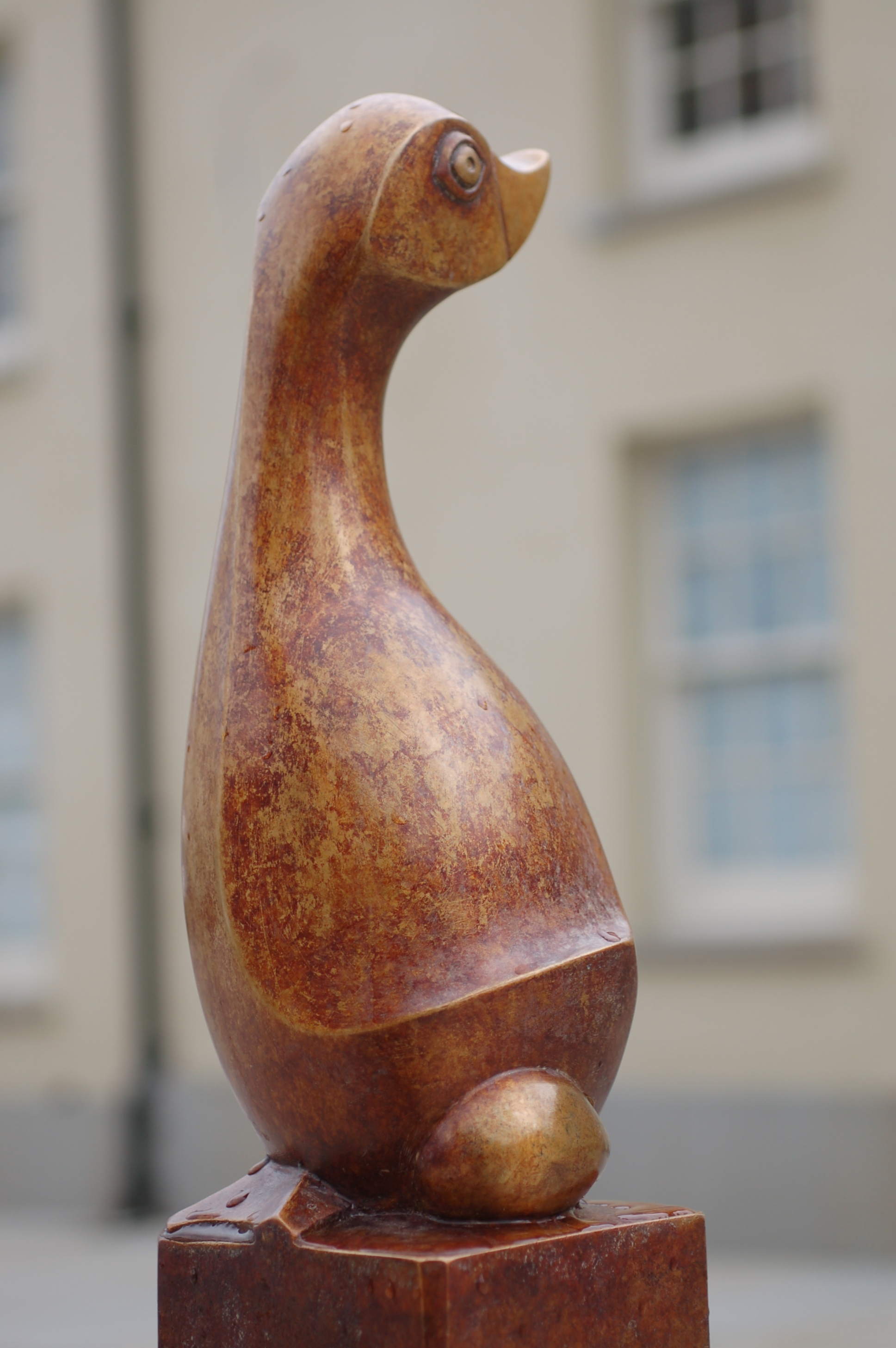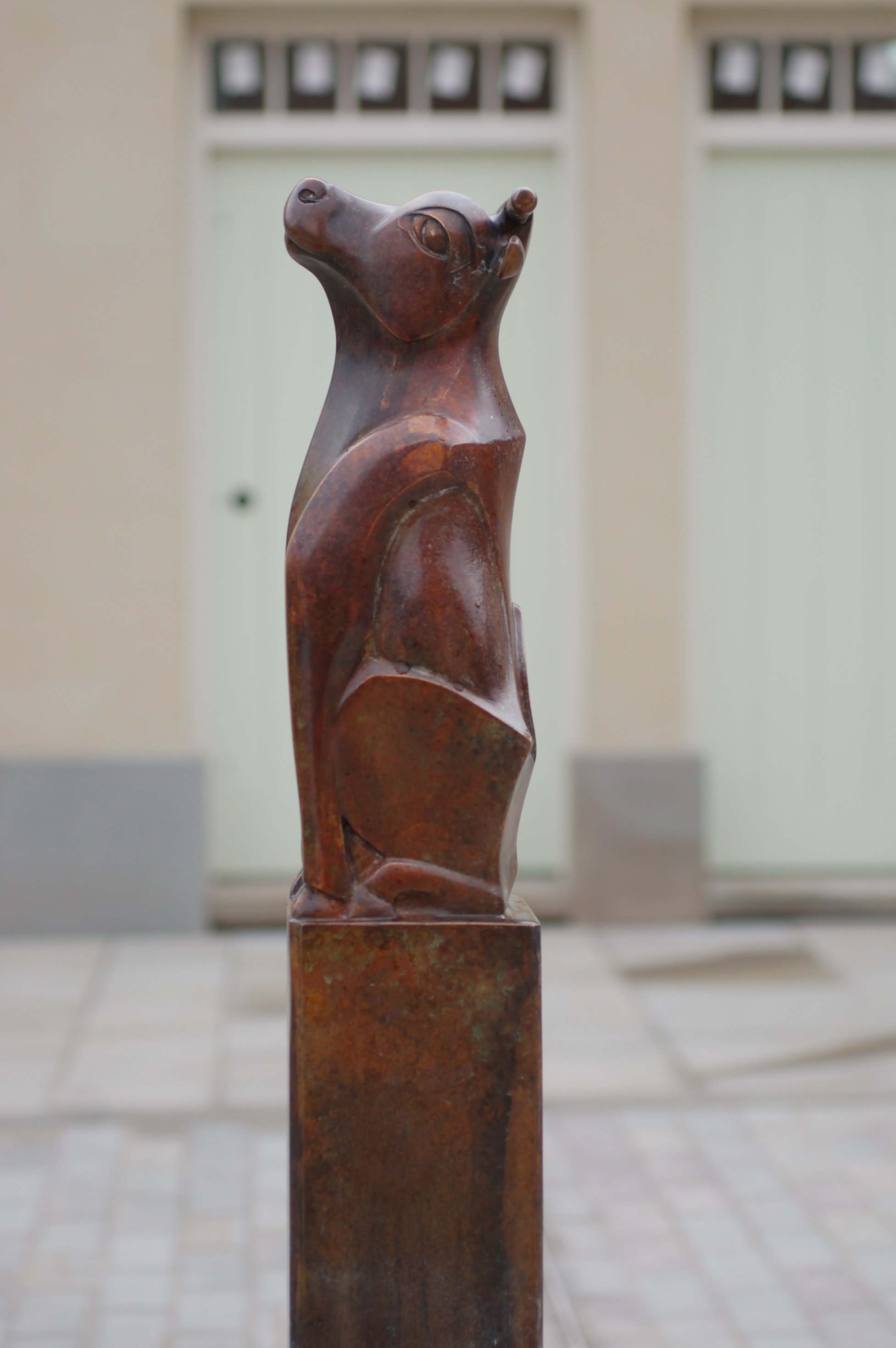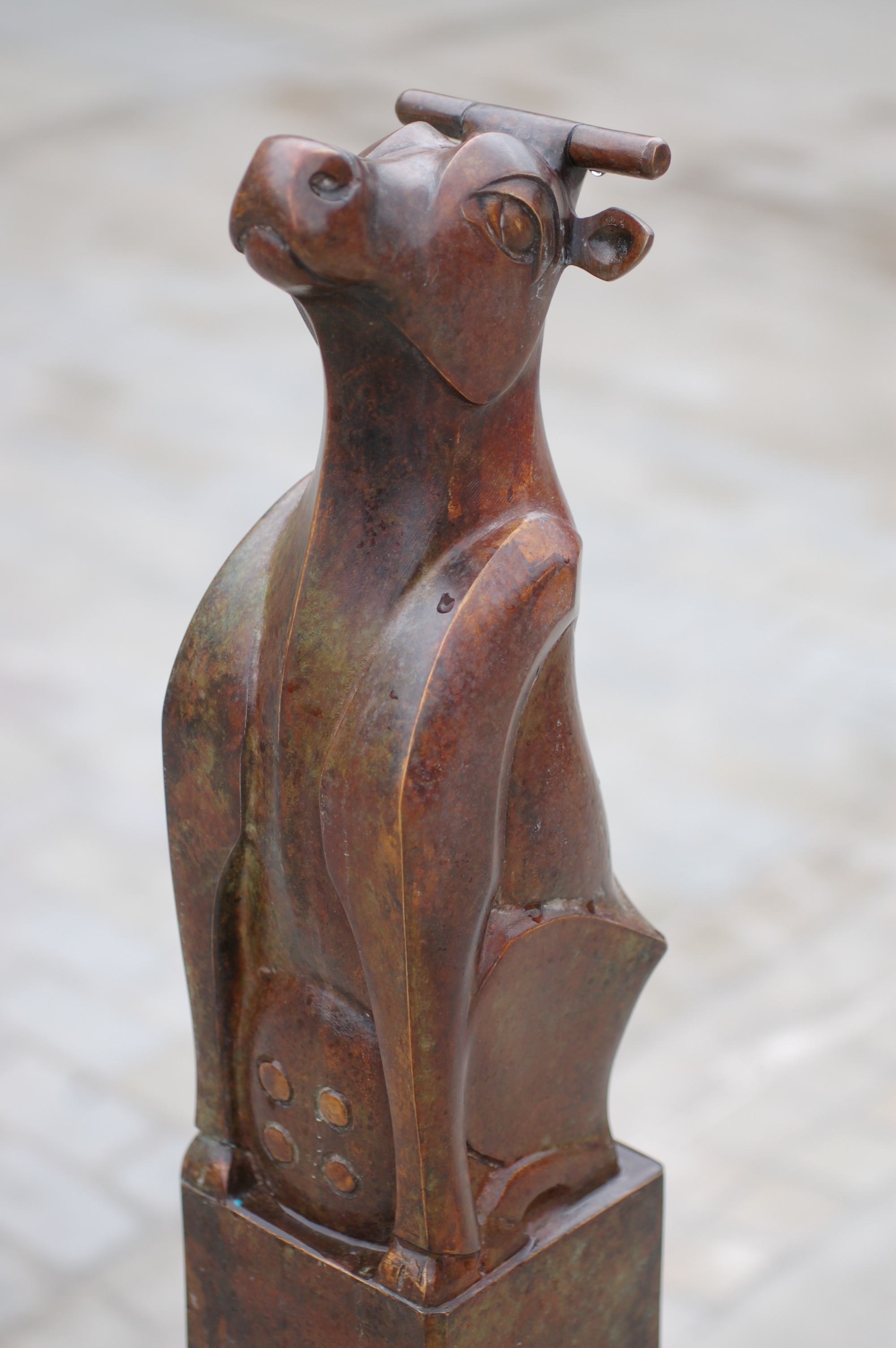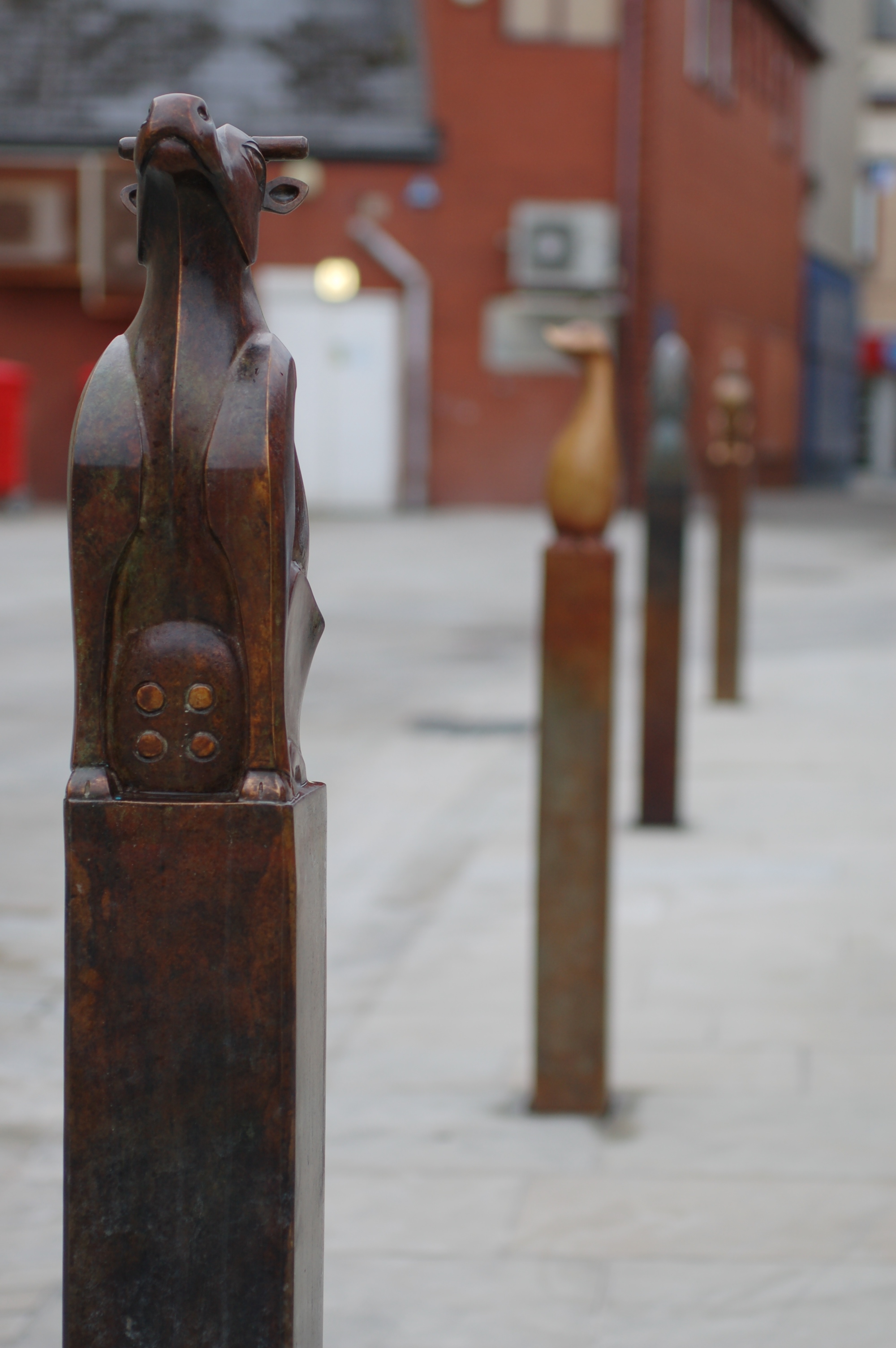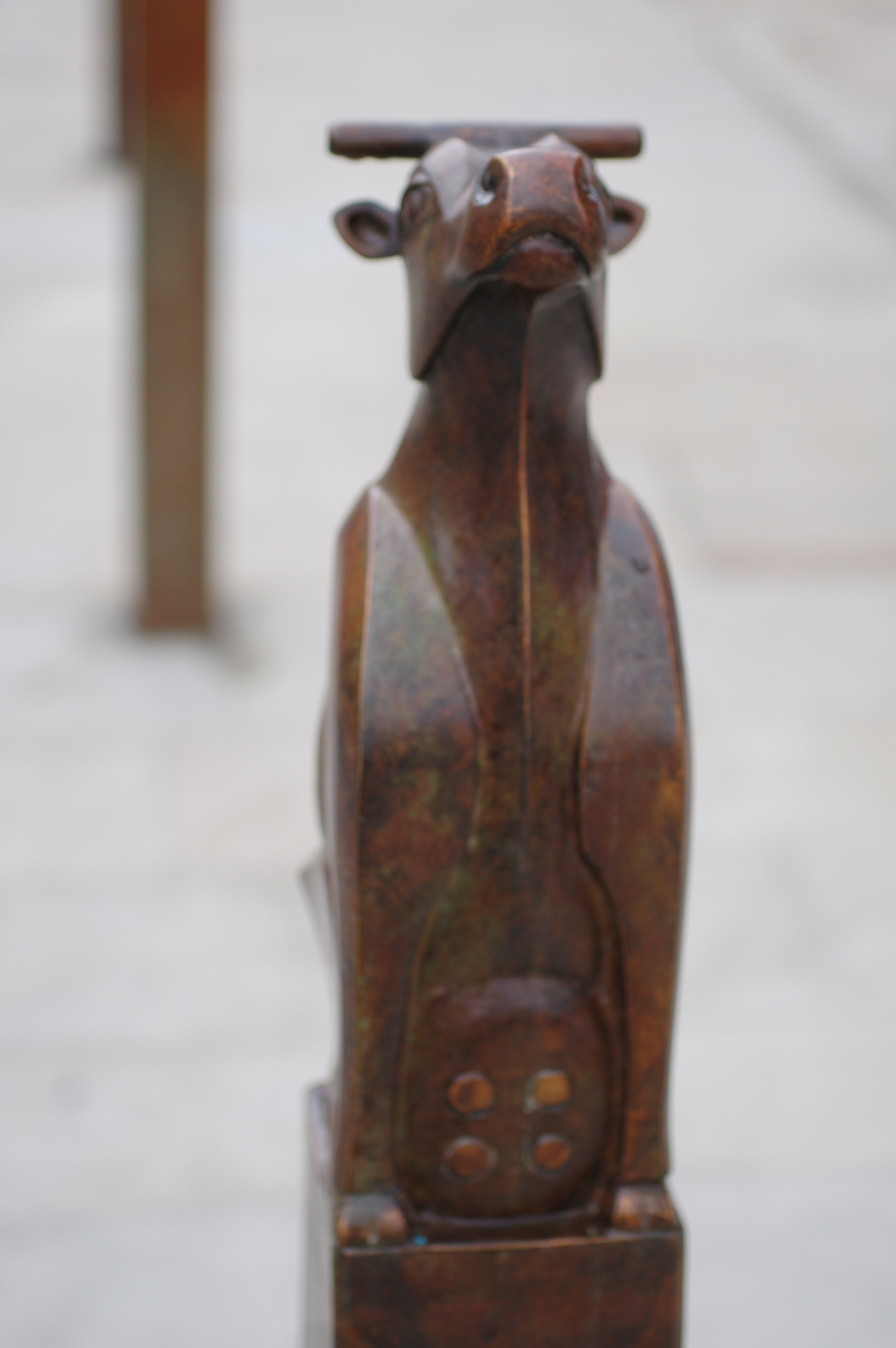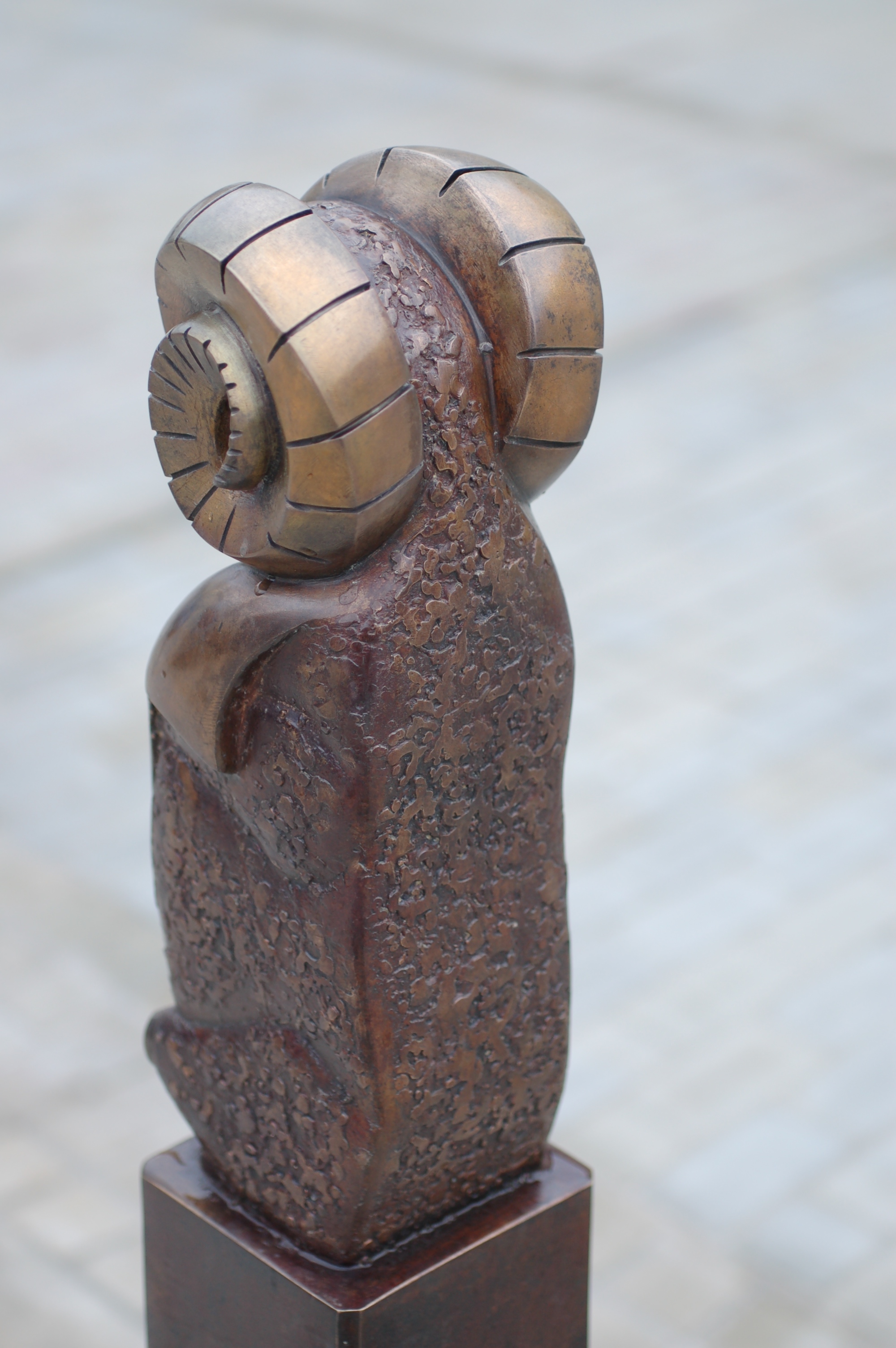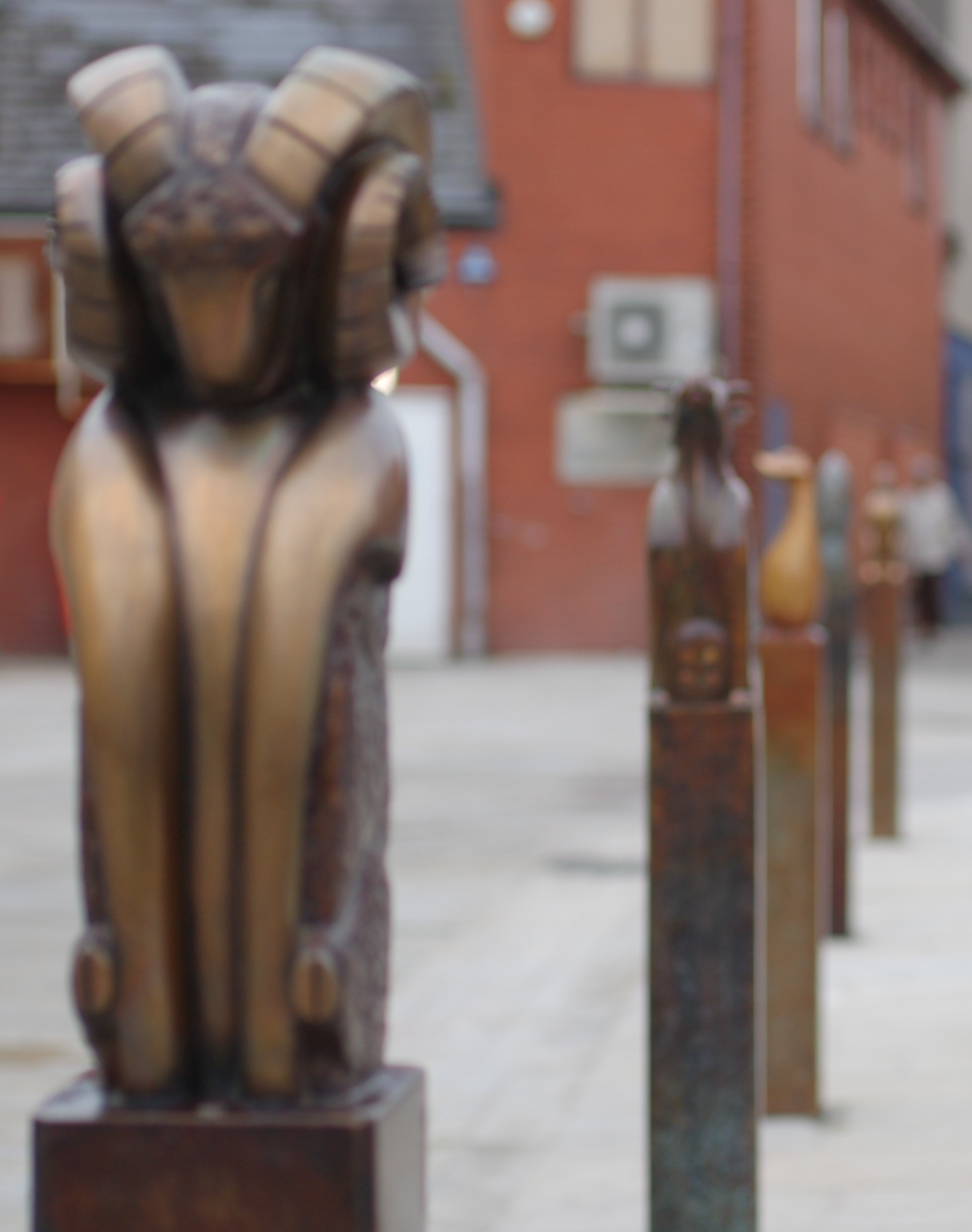Elder Street
NAME : Elder Street; Thresholds, Animals to Market DATE : 2015 CLIENT : Bridgend County Borough Council LOCATION : Elder Street, Bridgend, South Wales. PARTNERS: LEW foundry, Forest Pennant Stone, Adrian Wright
Aim
Our aim was to distinguish Elder Street from the other streets in Bridgend - as a pre-industrial, medieval pathway embedded in a predominantly industrial era town.
We noticed how Elder Street arched its way across a grid of much straighter thoroughfares. It was obvious that this street was not laid out like its neighbours, but was worn in by generations of feet treading the same path.
What were the reasons this path was repeatedly trodden? How could we give the Elder Street of today a character to make people wonder whose footsteps they are treading in?
Elder Street - the ancient and original way to Bridgend.
Before there was Bridgend there was Nolton (‘old farm/village’), a hamlet on the east bank of the river Ogmore, and Newcastle, a feudal estate with Norman castle and church on the west bank. Paths led from Nolton, across various points of a long ford and up the hill to Newcastle.
In the early 15th century a bridge was built at the northern end of the ford - not least to make the collecting of rents and tithes easier. The path that led from Nolton to the bridge became known as Elder Street.
Near the bridge on the Nolton side a market grew up, the beginnings of Bridgend. For centuries Bridgend remained merely a corner of the Newcastle estate, not an independent town. Nevertheless, Elder Street became increasingly the route from Nolton to the market as much as to the castle, church and tithe- barn on the other side of the river.
By the 18th century the market at the end of Elder Street sat under the shelter of an upper-storey town hall. By the mid-19th century the market had been moved and Elder Street led solely to Bridgend town hall.
A journey to market with seasonal produce.
Elder Street was worn into existence largely by people going to and fro with produce from the land - produce taken as rent and tithes, but increasingly produce brought to market. Produce carried on foot or by cart.
The lives of these people were tied into the rhythm of the seasons, to annual cycles of hunger and plenty we have long forgotten. They marked the progress of the year less by the months, more by the shared religious and agricultural feast days that stood like milestones along the way from one season to the next.
Our idea was to make a walk along Elder Street a journey to market through the cycle of the seasons.
Elder Street will have twelve threshold stones laid out along its length marking the major feast days of Easter, Whitsun, Michaelmas and so on, with their Welsh equivalents. A person walking from the Toll House to the old market end of the street will move from New Year through to Christmas.
At each stage of the journey along Elder Street the walker will encounter ten carved sandstone images of plants and animals representing produce brought to market at different times of year.
How the story is told
It was our intention that Elder Street becomes suggestive of a medieval lane cobbled with pennant paddle stones (though paved more evenly). Down the middle of the street run a pair of what look like cart tracks, in the form of long sandstone slabs laid end to end.
At intervals along its length we hoped to site ten free-standing marker stones carved with an image relating to seasonal produce for that time of year.
The carvings would have had something of the sentinel-like feel of medieval gargoyles. For this, the style of carving would not be deliberately imitative - certainly not overtly gothic. The style would be contemporary. But some of the earlier medieval gargoyles do have a simplicity that looks modern.
The monthly threshold stones would have sat between the cart tracks. Cut into this stone would be the name of the particular feast day - facing one way in Welsh, the other way in English.
Unfortunately this element of the design proved problematic to stakeholders in the town and so the free standing marker stones were expressed as a series of 6 bronze animals to market. The paving was also simplified although the threshold stones remained.
Monthly Threshold Designs
There are 12 limestone slabs set into the paving at intervals along Elder Street. These represent major feast days marking the pre-industrial calendar which roughly equates to the 12 months. Thus, the slabs become a series of thresholds to be crossed as a person makes their way from one end of the street to the other
Each slab bears the name of a feast day carved in English and Welsh, together with a number from 1 to 12. Between the English and Welsh names lies a design showing produce relating to that time of the year.
A Parade of Animals For Market
The hare - a season for poaching (hunting)
The salmon - a season for fishing
The goose - a season for laying
The cow - a season for milking
The sheep - a season for shearing
The pig - a season for slaughter and making merry
Making
The threshold designs were developed in-house by Peter Davidson and carved by our stonemason Adrian Wright. The ‘Animals to Market’ carving and modelling was in-house led by Peter Davidson, sand casting by LEW Foundry, fine finishing, welding and patinated in our own workshop.
The bronzes were dropped into fabricated steel shoes set into the paving.

